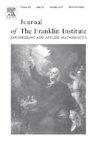Neural network-based prescribed performance control for spacecraft formation reconfiguration with collision avoidance
IF 3.7
3区 计算机科学
Q2 AUTOMATION & CONTROL SYSTEMS
Journal of The Franklin Institute-engineering and Applied Mathematics
Pub Date : 2024-11-13
DOI:10.1016/j.jfranklin.2024.107395
引用次数: 0
Abstract
This article investigates neural network (NN)-based prescribed performance control with collision avoidance for spacecraft formation systems in the presence of space perturbations and thruster faults. First, an artificial potential function is constructed to maintain spacecraft within communication range and avoid collisions. A prescribed performance function is then employed to constrain position errors within a preset boundary. Furthermore, a learning non-singular terminal sliding mode control (LNTSMC) law is developed to ensure that both the steady-state and transient performance of position tracking errors meet the prescribed performance constraints. A novel learning NN model is incorporated to estimate and compensate for the synthesized perturbations, utilizing an iterative learning algorithm to update the weights of the NN, thereby reducing computational complexity. The proposed LNTSMC scheme effectively addresses issues of inter-spacecraft collision avoidance, prescribed dynamic and steady-state control performance, and robust fault tolerance without imposing additional constraints on thruster faults. A rigorous stability analysis is provided, and the effectiveness and applicability of the proposed method are validated through simulation comparisons.
基于神经网络的规定性能控制,用于避免碰撞的航天器编队重组
本文研究了在存在空间扰动和推进器故障的情况下,基于神经网络(NN)的航天器编队系统避免碰撞的规定性能控制。首先,构建了一个人工势函数,以将航天器保持在通信范围内并避免碰撞。然后采用规定的性能函数,将位置误差限制在预设边界内。此外,还开发了一种学习型非矢量终端滑模控制(LNTSMC)法则,以确保位置跟踪误差的稳态和瞬态性能都符合规定的性能约束。利用迭代学习算法来更新 NN 的权重,从而降低了计算复杂度。所提出的 LNTSMC 方案有效地解决了避免航天器间碰撞、规定的动态和稳态控制性能以及鲁棒容错等问题,而不会对推进器故障施加额外的约束。本文提供了严格的稳定性分析,并通过仿真比较验证了所提方法的有效性和适用性。
本文章由计算机程序翻译,如有差异,请以英文原文为准。
求助全文
约1分钟内获得全文
求助全文
来源期刊
CiteScore
7.30
自引率
14.60%
发文量
586
审稿时长
6.9 months
期刊介绍:
The Journal of The Franklin Institute has an established reputation for publishing high-quality papers in the field of engineering and applied mathematics. Its current focus is on control systems, complex networks and dynamic systems, signal processing and communications and their applications. All submitted papers are peer-reviewed. The Journal will publish original research papers and research review papers of substance. Papers and special focus issues are judged upon possible lasting value, which has been and continues to be the strength of the Journal of The Franklin Institute.

 求助内容:
求助内容: 应助结果提醒方式:
应助结果提醒方式:


